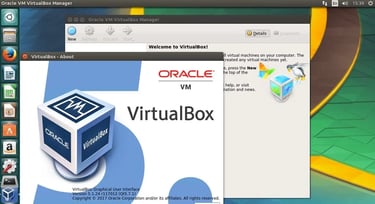Getting HamClock running on Windows PC
The Hamclock is a great application. The issue is that it was built to run under Linux. This post is about getting it available for windows PC users.


What is Hamclock ?
HamClock is a kiosk-style application that provides real time space weather, radio propagation models, operating events and other information particularly useful to the radio amateur.er 2017 issue and has been actively developed and expanded ever since.
More details are available on this website
It was created to run in a Linux OS environment system.
It can be configured to show your callsign data extracted from various logs etc.
A complete PDF handbook covering all the things it can do is available Here;
Getting it running on a Windows PC or Mac.
As stated above the application was created to run under a 'Linux' OS environment.
"So what we need to do is 'create' a Linux OS environment on the Windows PC."
This can be done using the 'in-built' Windows Subsystem for Linux (WSL) which is included in Windows.
Getting WSL installed is a straight forward task in WIndows:
Just type 'wsl install' in the command prompt and this should set it all up and install Ubuntu in a virtual space on your PC.


Alternatively you can use virtual OS machines which you can spin up as required such as Virtual Box(Free download from Oracle ) etc.,
or utilise any old laptop that you might have and have it boot into Linux OS etc. Also if you are already paying for Virtual Machines via a cloud account you could do the same there.
If creating a virtual Linux machine using tools like free VirtualBox then just create a simple Debian or Ubuntu install with the appropriate network interfaces required etc.


Installing the HamClock Application in Linux
Assuming you have the linux system OS install as above using whatever method you want to use, then the next step is to create the application in Linux. Follow the steps outlined below in the terminal mode of the Linux OS.
Step 1 - is to check all the OS Updates are done and that you have all the packages you need to get the application running:
sudo apt-get update
sudo apt-get upgrade
sudo apt install curl make g++ xorg-dev libx11-dev zip
Step 2 - Remove any previous install and then download the ZIp file and extract all the files locally on the LInux OS>:
cd
rm -fr ESPHamClock
curl -O https://www.clearskyinstitute.com/ham/HamClock/ESPHamClock.zip
unzip ESPHamClock.zip
Step 3 - move to the install direectory and then 'make' (compile) the application and install routines locally:
cd ESPHamClock
make -j 4 hamclock-web-1600×960
sudo make install
The size/resolution of the application can be adjusted by using an alternative switch parameter on the make line etc.
(The last 'make install' moves the compiled application into the OS executable directory.)
Running the HamClock from a browser window of you PC.
Hamclock can now be accessed from the web browser on http://127.0.0.1:8081/live.html or
from the rest of your network on http://[IP/HostName of Windows machine]:8081/live.html
If you have compiled and setup to run API server from Port 8080 for status information etc.
Before you start running the application it best to get the browser up and running because as the application starts the 'configuration' section of the application only remains visible for a short period of time and then the main screen clock takes over using the configuration you have setup.
So to start the Linux application from the Windows command prompt:
wsl sudo hamclock &
What this does is start WSL then start the hamclock application in background (the & char at then end means put into background)
The browser should now give you the output from the 'hamclock' application in the browser window of the PC.
